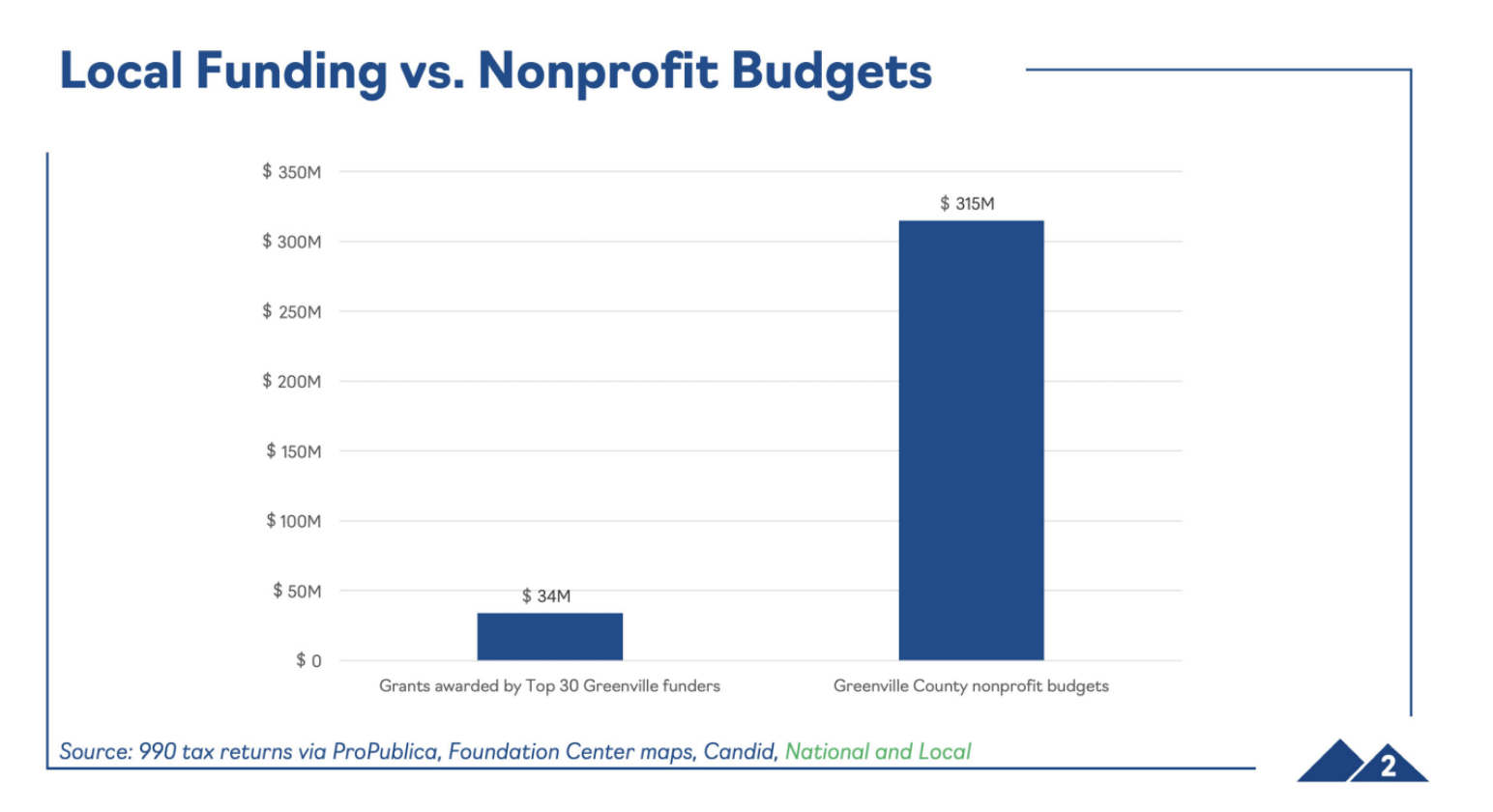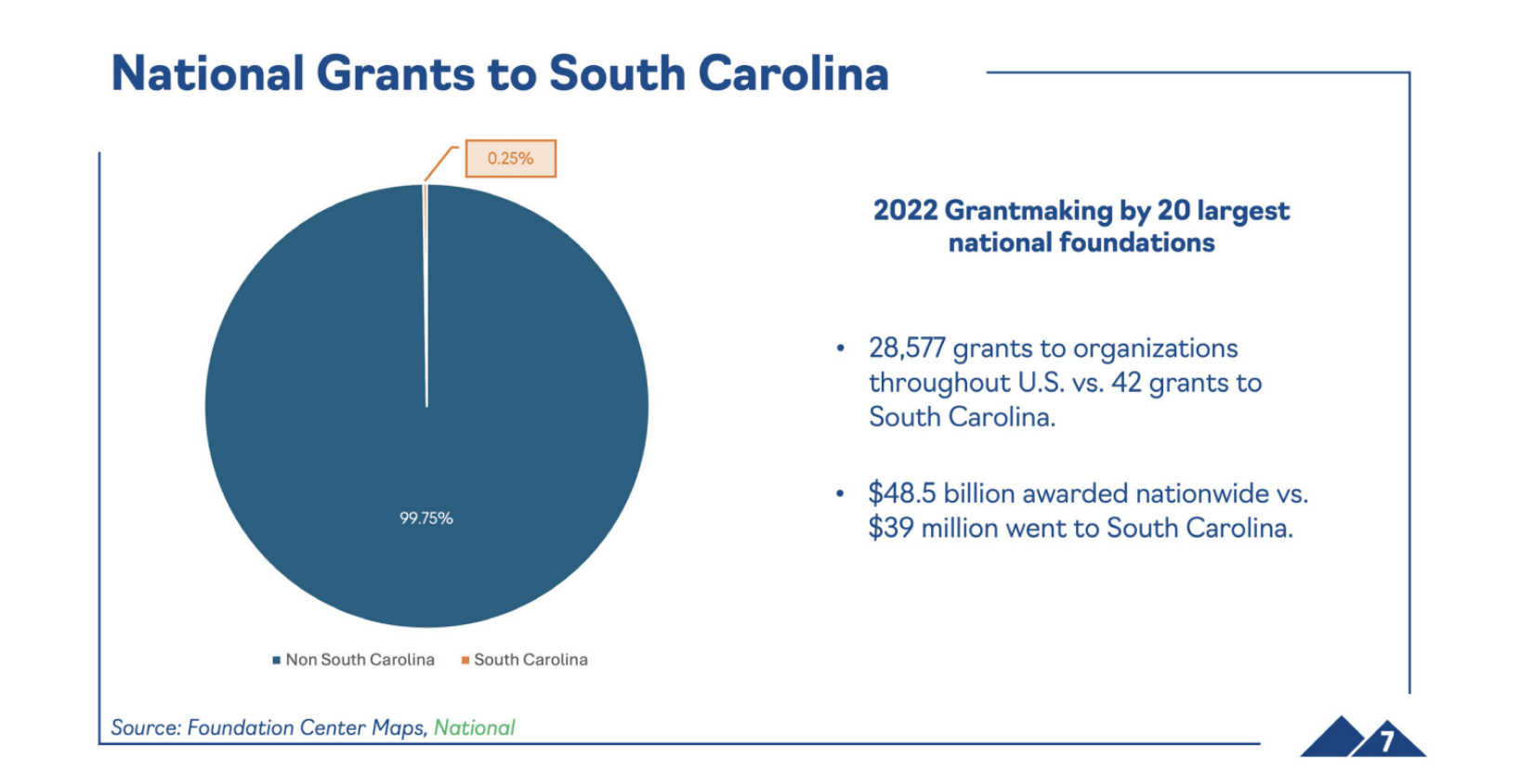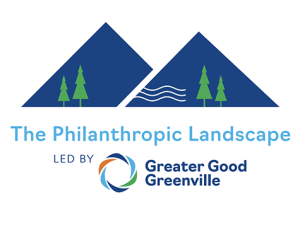Greater Good Greenville unveils comprehensive philanthropic landscape study of Greenville County
September 18, 2024Greater Good Greenville, in collaboration with local funders and nonprofits, announced the findings of its groundbreaking Philanthropic Landscape analysis of Greenville County at an event on September 17. The study provides crucial insights into the scope of philanthropic investment in the region and sets the stage for collective planning to address future community needs.
Data for the Philanthropic Landscape study was gathered from:
- Five key informant interviews
- Two funder focus groups
- 51 nonprofit surveys
- Social network analysis
- 20 funder surveys
- Secondary data sourced from the IRS, Giving USA, and other sources
Key Findings:
Charitable giving has not kept up with inflation.
Giving USA released its 2023 findings illustrating that although total charitable giving in the UnitedStates hit more than $557 billion, when adjusted for inflation, giving declined 2.1% from the previous year.
Local Impacts of Inflation – In step with the nation as a whole, Greenville County nonprofits are struggling to keep up with inflation. 88% of Greenville nonprofits reported increased operating costs from 2018 to their most recent fiscal year, with 51% experiencing significant cost hikes.
Local foundations and funding organizations provide just a fraction of nonprofit budgets.
Organizational donors such as foundations and corporations have far less capacity to give than is collectively needed by Greenville County’s nonprofits. The 990 tax returns from the data set of 75 nonprofits showed total expenses for 2022 of $315 million. The top 30 funders together gave just over $34 million to Greenville County-based nonprofit organizations in 2022, or 11% of the total expenditures noted. Dropping the largest nonprofits – those with budgets over $10 million – and including the full list of Greenville County foundations for 2022 result in foundation Greenville-based giving covering 40% of the “smaller” budget nonprofits.

Individual giving presents the greatest opportunity for nonprofits.
Individual donors are consistently the top source of contributed revenue for nonprofits nationwide—individuals made 67% of charitable gifts in the US last year
Individual giving has changed dramatically in the last five years.
Individual giving is consolidating globally and locally, with fewer people making more significant donations. In 2022, just 400,000 people around the globe contributed 38% of all the world’s charitable gifts. Their giving increased by 25% from 2018, which is good news, but it means that morethan one-third of the world’s charitable giving was made by a group smaller than the population ofGreenville County.2In addition, wealthy people increasingly use mechanisms like family foundations and DAFs forcharitable giving. Nationally, giving to DAFs and foundations rose more than any other giving category in 2023—more than organizations focused on education, arts, health, human services, or religion.
More nonprofits are finding ways to earn revenue through mission-aligned business opportunities.
Earned revenue from sales and services has been an area of growth, with 37.5% of nonprofits reporting increased earned revenue from 2018 to 2022, according to the nonprofit leaders survey.However, successful implementation of earned revenue models requires significant human and financial resources and alignment with the nonprofit’s mission.
Examples of revenue earners in Greenville County are thrift stores like those of Goodwill, Habitat, orSafe Harbor; the Jasmine Kitchen social enterprise of Jasmine Road; Soteria’s woodworking shop; or fees charged for summer camps, classes, or performances at arts or youth-serving organizations .Even though earned revenue is an area of potential growth, it takes careful strategy, consideration, and investment. Just like any new line of business, adding an earned revenue model to a nonprofit requires human and financial resources. Earned revenue has tremendous potential as it allows nonprofits freedom from shifts in philanthropy, but it is not as easy as setting up a lemonade stand.
Grantmaking and grantseeking can be time-consuming, and nonprofits and philanthropic funders can make it easier on each other.
Greenville County and South Carolina capture only a small fraction of national grants.

Our community lacks sufficient data to make decisions and align efforts.
Trust is more important than ever.
The Independent Sector’s 2024 report,Trust in Nonprofits and Philanthropy notes that without trust, it’s nearly impossible for nonprofits and philanthropic funders to achieve their missions.
Fortunately, their study showed that trust in nonprofits is on the rise, with 57% of Americans saying they trust nonprofits to reduce national divisions more than they trust corporations, government, or the media
The project’s sponsors included the Community Foundation of Greenville, the Hathaway Family Foundation, Hollingsworth Funds, and the Jolley Foundation.
The Research Team included the Community Research Group and ISI Consulting.
After concluding research for the study, Greater Good Greenville presented community recommendations and specific initiatives the organization would take responsibility for leading in 2025.
A full link to the report (including charts and slides) can be downloaded using this link.
About Greater Good Greenville
Greater Good Greenville galvanizes nonprofit organizations, philanthropic funders, and mission-minded businesses and individuals—for collaborative problem-solving and learning, advocacy, and joint investing to address our community’s challenges.


















